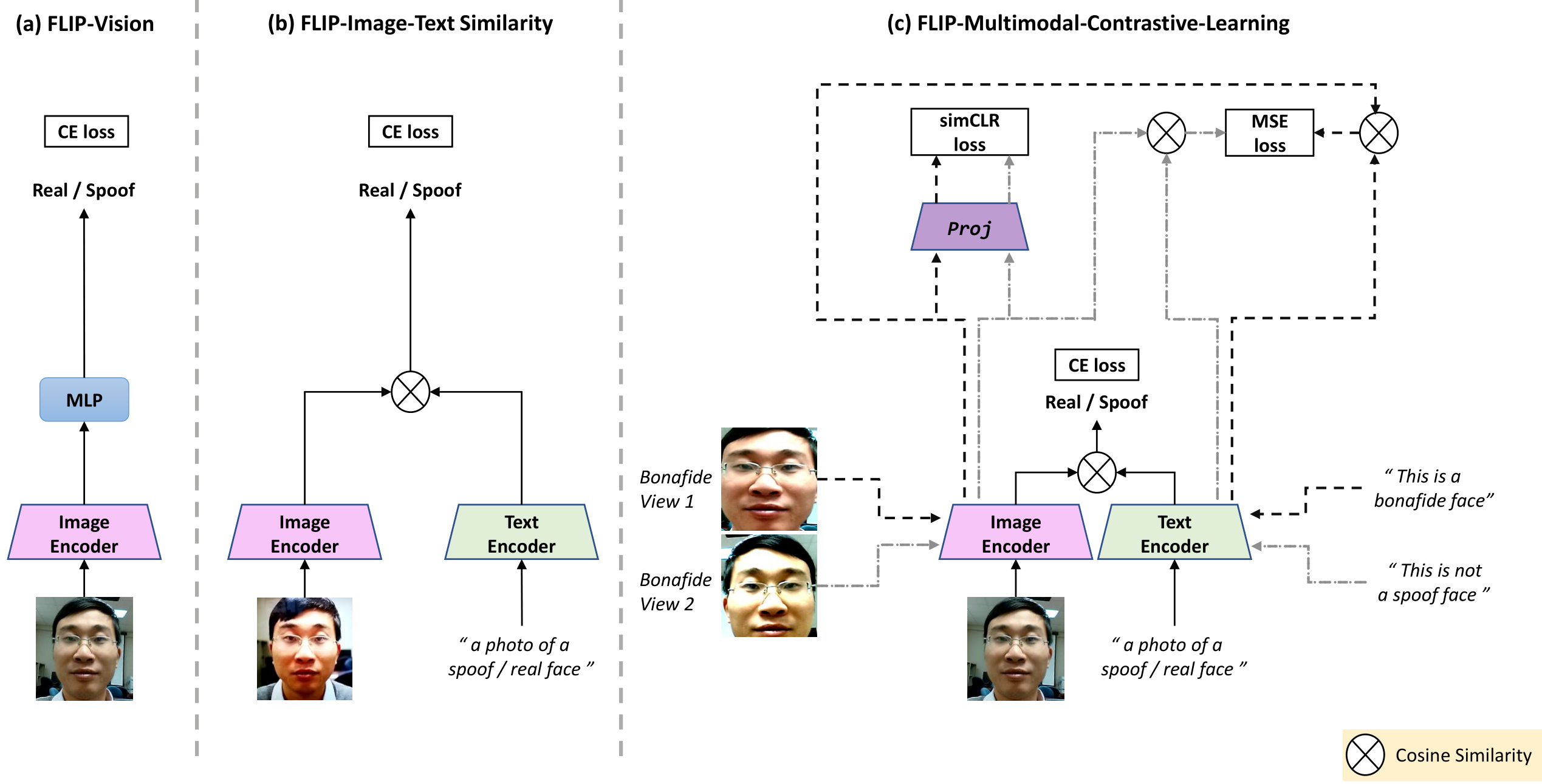FLIP: Cross-domain Face Anti-spoofing with Language Guidance
Face anti-spoofing (FAS) or presentation attack detection is an essential component of face recognition systems deployed in security-critical applications. Existing FAS methods have poor generalizability to unseen spoof types, camera sensors, and environmental conditions. Recently, vision transformer (ViT) models have been shown to be effective for the FAS task due to their ability to capture long-range dependencies among image patches. However, adaptive modules or auxiliary loss functions are often required to adapt pre-trained ViT weights learned on large-scale datasets such as ImageNet. In this work, we first show that initializing ViTs with multimodal (e.g., CLIP) pre-trained weights improves generalizability for the FAS task, which is in line with the zero-shot transfer capabilities of vision-language pre-trained (VLP) models. We then propose a novel approach for robust cross-domain FAS by grounding visual representations with the help of natural language. Specifically, we show that aligning the image representation with an ensemble of class descriptions (based on natural language semantics) improves FAS generalizability in low-data regimes. Finally, we propose a multimodal contrastive learning strategy to boost feature generalization further and bridge the gap between source and target domains. Extensive experiments on three standard protocols demonstrate that our method significantly outperforms the state-of-the-art methods, achieving better zero-shot transfer performance than five-shot transfer of adaptive ViTs. Code: https://github.com/koushiksrivats/FLIP
PDF Abstract ICCV 2023 PDF ICCV 2023 Abstract




 Replay-Attack
Replay-Attack
 MSU-MFSD
MSU-MFSD
 CASIA-MFSD
CASIA-MFSD
 WMCA
WMCA
 OULU-NPU
OULU-NPU